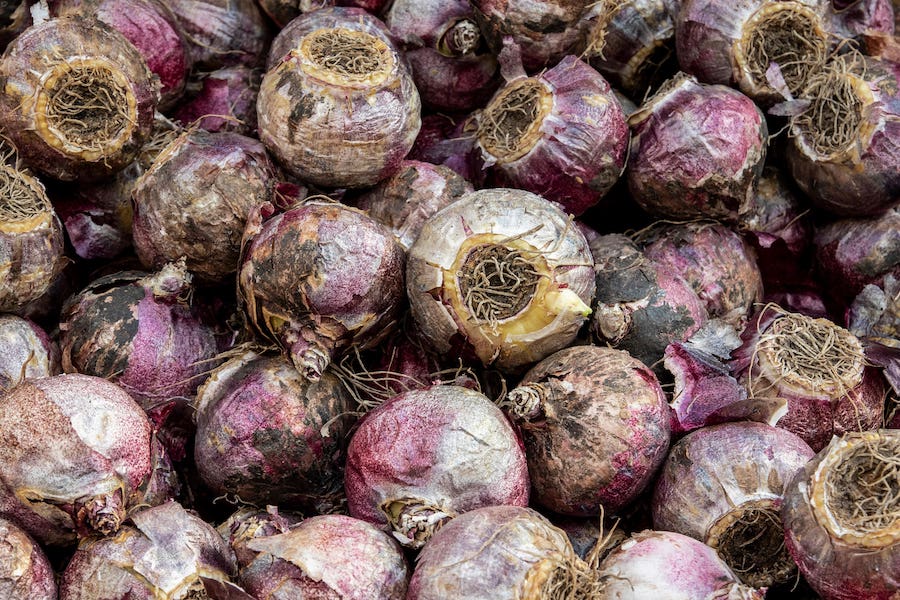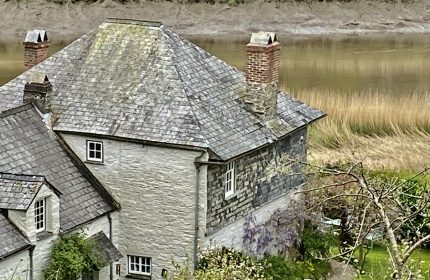How to force bulbs to flower at Christmas
Make a head start to enjoy beautiful hyacinths and daffodils on your Yuletide table
It may seem a long time until Christmas, but if you want beautifully scented indoor hyacinths and other bulbs such as dwarf narcissi for the festive season you need to think about planting ‘forced’ bulbs now.
Forcing means encouraging bulbs to flower earlier than they would naturally and it is done by growing them indoors for all or part of their growing season.
The prepared bulbs, which are usually available at the end of August, have been given a few weeks of cold treatment before sale, which tricks the bulbs into thinking that they have been through winter.
View this post on Instagram
Most bulbs need a period in the dark to allow the root to develop before any light starts encouraging leaves and flowers, although amaryllis and freesias are exceptions.
When planted and kept indoors they will quickly develop roots and start to produce leaves and flowers.
Which bulbs can be forced?
View this post on Instagram
The best bulbs for forcing are hyacinths. Not only do they come in a wealth of colours, from deep purple to magenta pink, peach and cream, but their fragrance will fill the room and they look beautiful as a festive table centrepiece or on a mantelpiece.
The Dutch or common hyacinth (Hyacinth orientalis) is the most popular, with flower stalks bearing crowded bell-shaped flowers.
Other forced bulbs include hippeastrum (amaryllis), which produces vibrant, showy blooms in shades of crimson, red, pink and white, available from late autumn, and ‘Paperwhite’ varieties of daffodils, which also give off a delicious scent and don’t require a chilling period to bloom. They are often available from October and take four to six weeks from planting to blooming.

‘Paperwhite’ narcissi
Plant them in clumps with tips just below the surface in a pot, with a layer of grit at the base for drainage and then half filled with potting compost. As roots develop, move containers to a sunny windowsill.
What to do
Make sure you buy ‘prepared’ hyacinths from garden centres, which will need to be placed in pots in a cool, dark, dry and frost-free spot, in a temperature of between 1.5-9C for between eight to 13 weeks, depending on the cultivar, to give them time to produce strong root systems.
Ideally, they could be placed in a garage, shed, cold greenhouse or even a covered, shady area outside in a black bin bag with air holes added, making sure the bag is not touching the bulbs, the RHS advises.
Which container?
View this post on Instagram
You could plant each prepared hyacinth bulb in its own individual pot, around 1cm wider and 2.5cm deeper than the bulb, in potting compost, so the noses of the bulbs are just showing above the surface. Water them lightly and put them in a cool, dark place, protecting them from mice and checking regularly that the compost doesn’t dry out.
If you do it this way, once the shoots emerge, you can then put the individual pots into a bigger container filled with moss.
If you decide to plant the bulbs together in a pot, place a layer of grit, crocks or broken tiles in the bottom of the pot to allow free drainage. You can also buy specially prepared root fibre which will encourage growth and allow moisture to be retained without excluding air.

A layer of grit and a few broken tiles will encourage bulbs to bloom
Be careful when handling hyacinth bulbs, as their dust can cause skin irritations. You can plant them close together but don’t let them touch each other or the side of the bowl and never force them downwards into the compost. Rather, fill up the bowls with more compost.
When can they come into the warm?
When the shoots are around 5cm high, place them in a shady spot indoors at around 10C and then, after a week, move them closer to the window. In a few weeks the flower buds will appear and you can then move them to your chosen spot for flowering, which needs to be out of direct sunlight and draught-free. When in flower, they will last longer in a cooler situation indoors.
Don’t put bowls of bulbs near radiators because they are likely to dry up, wilt and die. The compost must be kept moist, but not waterlogged, at all times.
View this post on Instagram
Some support, such as pea sticks, may be needed for tall-flowering bulbs and you will need to turn them regularly if they are placed near a window.
Make sure you look at the variety of prepared bulb you are buying as some have shorter chilling periods than others so may be more suitable for forcing from mid-September.
Hyacinth ‘Pink Pearl’, for instance, needs 10 weeks of cool conditions followed by three weeks indoors to reach flowering stage, while ‘Anna Marie’ requires only eight weeks cool and 18 days inside to bloom, says the RHS.
Why shouldn’t I just buy a cheap pot of hyacinths at Christmas?

Nurture forced blooms for best results, instead of relying on bargain pots
The problem can be that cheap indoor hyacinths may have poorly developed roots, which means the flower remains tightly enclosed in the bottom of the leaves because the roots aren’t strong enough to push the flowers out effectively from the bulb.
The Press Association
Latest posts by The Press Association (see all)
- Dame Kelly Holmes: ‘Getting old is a privilege but ageing I don’t like’ - April 27, 2024
- 9 of the most iconic dance scenes in movies - April 27, 2024
- Why is melanoma on the rise? As new personalised ‘gamechanger’ skin cancer jab is tested - April 27, 2024
- King to resume public duties after positive cancer treatment - April 26, 2024
- 3 recipes to make from the new Hairy Bikers cookbook - April 26, 2024





















